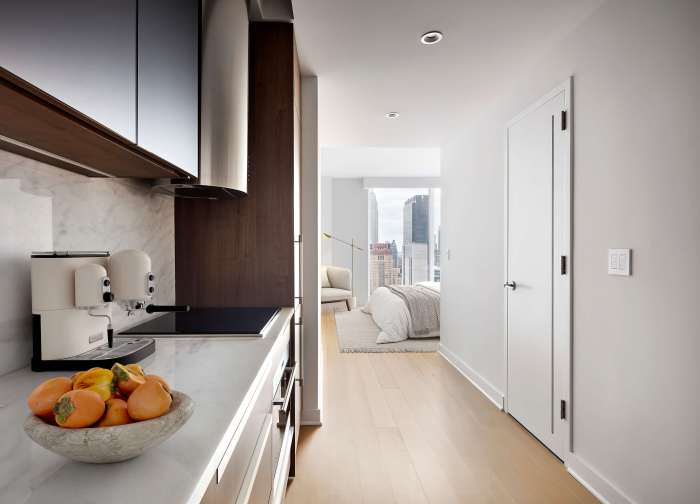
My boyfriend stays at my place several nights a week, but I live with roommates, and our landlady lives right across the hall. In the interest of being tactful, are there any viable techniques I can try for soundproofing in a rental apartment, or within an individual bedroom?
While you’ll have to avoid more heavy-duty soundproofing methods — and you’ll most certainly want to check with your landlord before making any kind of changes to your apartment — you do have a few options that should help minimize noise (and maximize your privacy), say our experts.
“Rentals are always a challenge, but there are definitely things that can be done to reverse the transfer of noise,” says City Soundproofing owner Mason Wyatt. “The main thing to remember is that where air goes, noise goes.”
With that in mind, you should focus your attention on doors — both the door to your bedroom and the main door to the apartment. “Seventy percent of noise usually makes its way through those little spaces,” concurs Quiet Zone Soundproofing president Ronan Blee.
First up, Wyatt recommends trying a “draft blocker,” a sock-like insulator you simply place at the bottom of your door. (Bed Bath & Beyond carries one for $9.99.) If that doesn’t do the trick, you can add seals around your door frame. (Wyatt recommends avoiding foam, which isn’t great at blocking noise, and instead opting for a material like Pemko SiliconSeal adhesive.) Depending on how well the draft blocker works, you may also want to consider installing a “door sweep,” which can be purchased for between $12 to $15 (and Home Depot has an installation tutorial here).
While doors are always the most common noise-leaking culprits, if your apartment has been cheaply built, you’ll likely find yourself contending with thin, far-from-soundproof materials used to build your walls and, yes, the door itself. In this case, Wyatt recommends nailing a huge floor mat — the kind of carpet that comes with a layer of rubber underneath — to the door. (Think of it as a decorative statement.)
And if you’re willing to lay out some serious cash, Blee mentions one other option: adding another level of drywall and Green Glue (a soundproofing agent) to one side of the offending wall, which will likely cost you between $1,000 and $2,000, depending on the size of the wall in question. “Most landlords would allow that because you’d have it painted over when it’s finished,” Blee says. “But everything would have to be pre-approved. That’s the first step, to have a conversation with the landlord to see what’s allowed, and then determine the best solution from there.”
Virginia K. Smith is the senior editor at BrickUnderground.com, the online survival guide to finding a NYC apartment and living happily ever after. To see more expert answers or to ask a real estate question, click here.

















